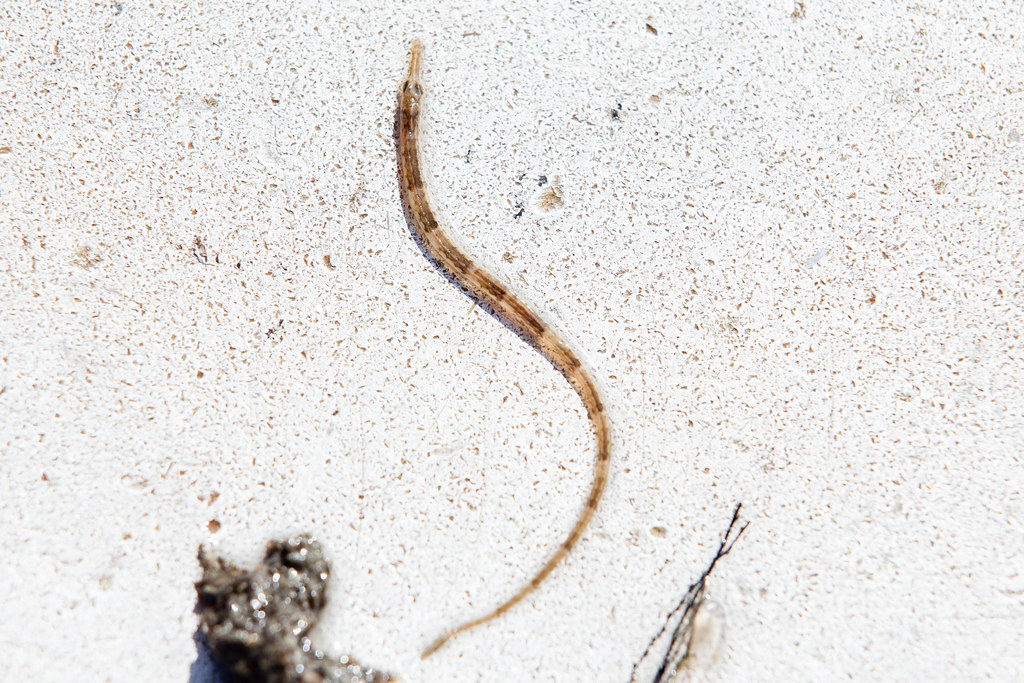Pipefish
Syngnathus spp.
Pipefish are small, skinny fish found among underwater grass beds throughout the Chesapeake Bay.

Appearance
Two species of pipefish can be found in the Chesapeake Bay: the Northern pipefish, Syngnathus fuscus, and the dusky pipefish, Syngnathus floridae.
Pipefish grow 6 to 8 inches in length and have long, thin bodies covered with rings of bony plates. They have long snouts and brownish, fan-shaped tail fins. Northern pipefish vary in color from pale tan to brown, with mottled tannish and brown markings. Dusky pipefish vary in color from whitish to brownish, with tan to nearly black markings. Dusky pipefish have a longer snout and a shorter dorsal fin than northern pipefish.
Feeding
The pipefish eats mostly tiny crustaceans. Northern pipefish may also feed on fish eggs, very small juvenile fish and other small aquatic animals.
Predators
Pipefish are believed to have few predators due to their ability to camouflage themselves within grass beds. They imitate blades of grass by aligning themselves vertically within grass beds and swaying softly. Bass, gars, perch, drums and weakfish may prey upon pipefish.
Reproduction and Life Cycle
Spawning occurs between April and October, with a peak in May to June. The female lays her eggs into the male’s brood pouch, where they are fertilized. The male incubates the eggs for approximately two weeks before they hatch. He then releases a cloud of tiny, fully-formed pipefish from his pouch into the water.
Did You Know?
- The northern pipefish is also known as the common pipefish. It is the more abundant of the two Chesapeake Bay pipefish species.
- Pipefish are closely related to seahorses.
- Like lined seahorses, dusky pipefish are able to change color to match their surroundings.
Sources and Additional Information
- Fishes of Chesapeake Bay by Edward O. Murdy, Ray S. Birdsong and John A. Musick
- Life in the Chesapeake Bay by Alice Jane Lippson and Robert L. Lippson
- Common Pipefish – Friends of Merrymeeting Bay
